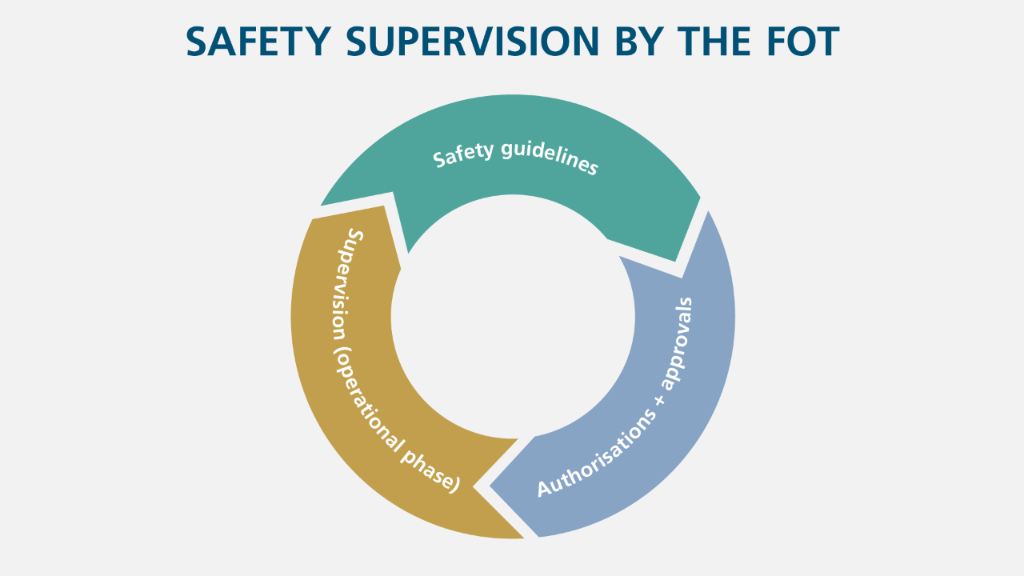Safety supervision is divided into the normative, preventive and operational phases.

© FOT
Normative phase: Amendment of safety regulations
The FOT systematically analyses incident reports, the results of audits and inspections, as well as findings on prevention. The results serve as a basis for improving and updating the applicable safety regulations. As such, the FOT continuously adapts safety standards in public transport to more stringent requirements.
The FOT can amend some regulations independently. Where that is not possible, it submits a request to the department, the Federal Council or Parliament to make the necessary amendments.
Preventive phase
Before a transport company is authorised to put a system or vehicle into operation, the FOT carries out a risk-oriented safety check. In planning approval procedures, for example, it examines whether the documents submitted by infrastructure operators guarantee that public transport facilities will be built and operated in accordance with the applicable regulations. As part of preventive supervision, the office also decides on the authorisation of new components and vehicles or on new operating regulations.
Innovation Projects Coordinator IPC
In the case of new, innovative projects, the FOT's Innovation Projects Coordinator (IPC) assists transport companies with regard to what documentation has to be submitted in relation to upcoming procedures (e.g. selection of risk assessment methodology, safety verification procedure, selection and commissioning of the necessary independent inspection bodies).
More information in the blog post: «Dank dem Koordinator Innovationsprojekte effizient durch die Bewilligungsverfahren». (in german)
You can reach the Innovation Projects Coordinator IPC at:
Federal Office of Transport
Innovation Projects Coordinator (IPC)
Tel. +41 58 463 20 81
kip@bav.admin.ch
Operational phase
Responsibility for operational safety generally rests with the transport companies and installlation constructors. The FOT checks to ensure that they assume that responsibility. To that end, it conducts audits and on-site inspections.
During inspections, FOT staff check the operational safety of individual vehicles or parts of the infrastructure by carrying out risk-oriented spot checks.
If the FOT finds that safety regulations are not being complied with, the companies are required to rectify the shortcomings within a certain period of time.




